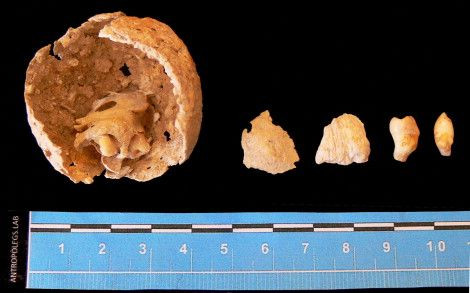1,600-Year-Old Skeleton Provides Oldest Example of Tooth-Filled Tumor

A skeleton in Spain has provided archaeologists with a bizarre sight: a tumor with four teeth inside. The finding is the oldest known example of such a tumor, and may provide clues to how the woman died.
According to LiveScience, the tumor is called a teratoma, with the roots of the word coming from the Greek words "teras" and "onkoma", which translate into English to "monster" and "swelling", respectively. Hers measured 1.7 inches, or 44 millimeters, at its largest point, and still contains two teeth in the tumor walls. Though bizarre-looking, the tumors are generally benign, created from germ cells that can also create bone, hair and teeth. However, even if benign and even if she never felt symptoms, the tumor may have still been responsible for her death. Because it was located in an ovary, its placement may have caused pregnancy complications or hemolytic anemia.
Still, researchers cannot be certain what, if any, effect that tumor had on the woman's life. "We suppose that, at least during a long part of her life, she was completely unaware of this tumor. Depending on the eventual complications, she could have suffered," but that is not a certainty, study lead author Nuria Armentano said to LiveScience. "She could have died because of many other causes!"
The woman would have lived 1,600 years ago, at a time when areas of the Roman empire were being overtaken by "barbarians" in Spain. Spain, in particular, was divided among the groups known as the Vandals, Suevi and Alans. Buried in a tegulae grave in the Catalonia region of Spain, which consists of tiles put over her body in a sort of roof, she is not thought of to be a prominent figure of society. After all, tegulae graves were the most common of the Roman burials.
The finding was published in the International Journal of Paleopathology.



























